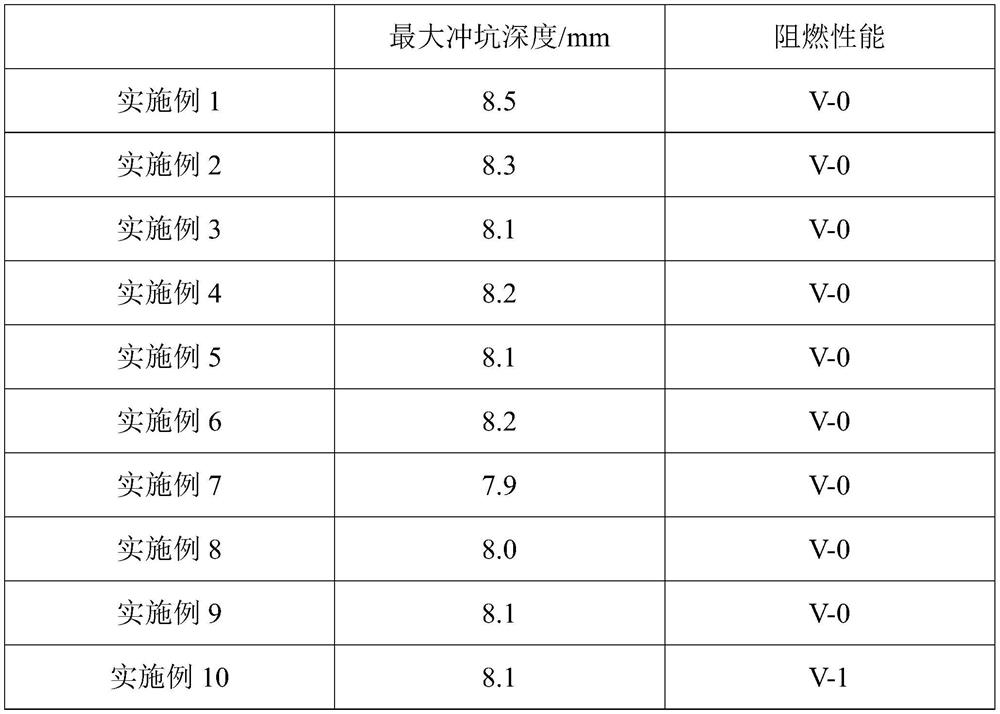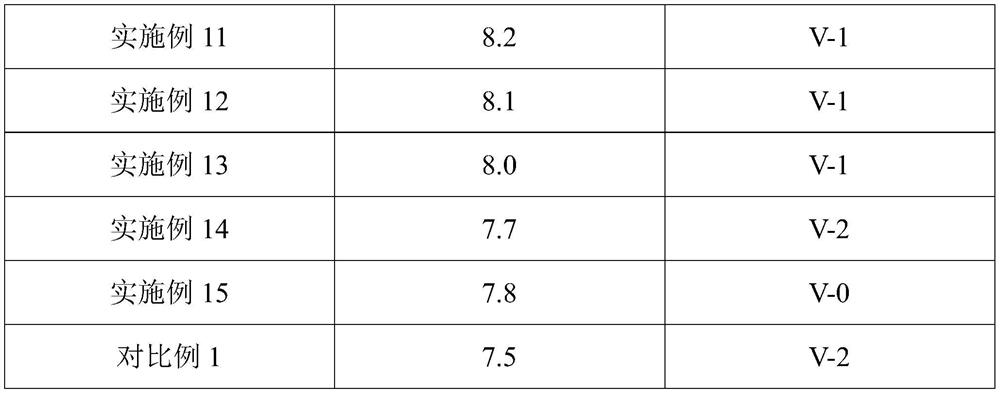Composite aluminum-plastic film as well as preparation method and application thereof
A composite aluminum and plastic film technology, applied in chemical instruments and methods, applications, household appliances, etc., can solve the problems of aluminum-plastic film without flame retardancy and poor safety, so as to improve safety, enhance flame retardancy, The effect of high heat resistance
- Summary
- Abstract
- Description
- Claims
- Application Information
AI Technical Summary
Problems solved by technology
Method used
Image
Examples
Embodiment 1
[0041] This embodiment provides a method for preparing a composite aluminum-plastic film, the preparation method comprising:
[0042] (1) Nylon fibers are immersed in the flame retardant tetrakis hydroxymethyl phosphorus chloride, the mass concentration of the flame retardant is 25wt%, and the immersion time is 24h to obtain the nylon fibers after the flame retardant treatment;
[0043] (2) Nylon fibers treated with a flame retardant at a mass ratio of 1:1 are blended with poly-p-phenylenebenzobisoxazole fibers to obtain a protective layer with a thickness of 2.5 μm;
[0044](3) Laminating the protective layer obtained in step (2) with an aluminum layer with a thickness of 40 μm and a polypropylene layer with a thickness of 35 μm to obtain a composite aluminum-plastic film.
Embodiment 2
[0046] This embodiment provides a method for preparing a composite aluminum-plastic film, the preparation method comprising:
[0047] (1) Nylon fibers are immersed in the flame retardant tetrakis hydroxymethyl phosphorus chloride, the mass concentration of the flame retardant is 28wt%, and the immersion time is 22h to obtain the nylon fibers after the flame retardant treatment;
[0048] (2) Nylon fibers treated with a flame retardant with a mass ratio of 2:3 are blended with poly-p-phenylene benzobisoxazole fibers to obtain a protective layer with a thickness of 2.7 μm;
[0049] (3) Laminating the protective layer obtained in step (2) with an aluminum layer with a thickness of 38 μm and a polypropylene layer with a thickness of 38 μm to obtain a composite aluminum-plastic film.
Embodiment 3
[0051] This embodiment provides a method for preparing a composite aluminum-plastic film, the preparation method comprising:
[0052] (1) Nylon fibers are immersed in the flame retardant tetrakis hydroxymethyl phosphorus chloride, the mass concentration of the flame retardant is 22wt%, and the immersion time is 26h to obtain the nylon fibers after the flame retardant treatment;
[0053] (2) Nylon fibers treated with a flame retardant at a mass ratio of 1:2 are blended with poly-p-phenylene benzobisoxazole fibers to obtain a protective layer with a thickness of 2.2 μm;
[0054] (3) Laminating the protective layer obtained in step (2) with an aluminum layer with a thickness of 42 μm and a polypropylene layer with a thickness of 32 μm to obtain a composite aluminum-plastic film.
PUM
| Property | Measurement | Unit |
|---|---|---|
| thickness | aaaaa | aaaaa |
| thickness | aaaaa | aaaaa |
| thickness | aaaaa | aaaaa |
Abstract
Description
Claims
Application Information
 Login to View More
Login to View More - R&D
- Intellectual Property
- Life Sciences
- Materials
- Tech Scout
- Unparalleled Data Quality
- Higher Quality Content
- 60% Fewer Hallucinations
Browse by: Latest US Patents, China's latest patents, Technical Efficacy Thesaurus, Application Domain, Technology Topic, Popular Technical Reports.
© 2025 PatSnap. All rights reserved.Legal|Privacy policy|Modern Slavery Act Transparency Statement|Sitemap|About US| Contact US: help@patsnap.com


